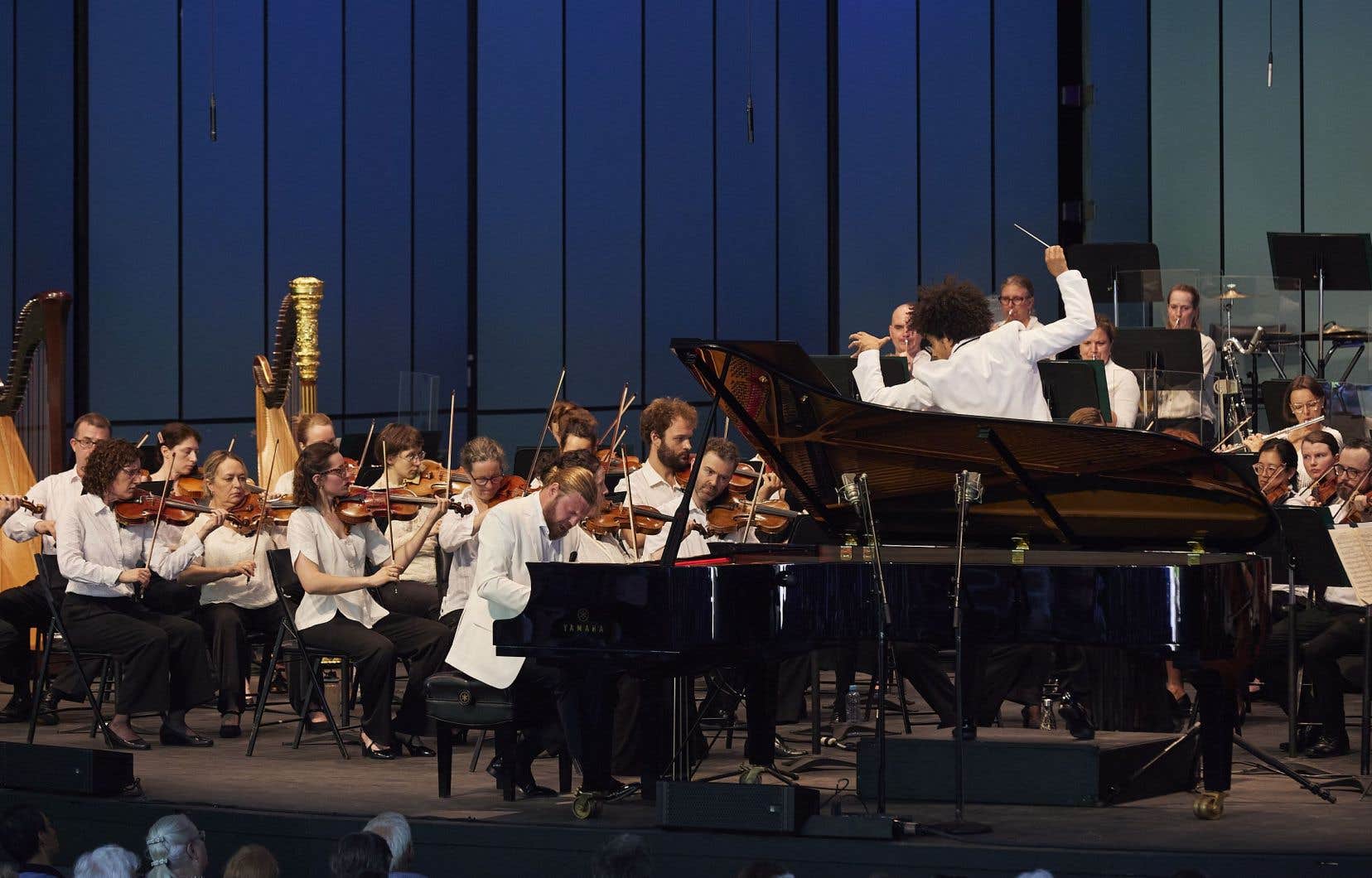After one Ninth of Beethoven in a flamboyant introduction, Rafael Payare and the Orchester symphonique de Montréal (OSM) were back at the Fernand-Lindsay amphitheater on Saturday for a second concert revealing, for his first presence in Quebec, an exciting pianist: Denis Kozhukhin .
37-year-old Denis Kozhukhin — whose exact French transliteration, “Kojoukhine,” is so rarely used that if you used it, you wouldn’t even know who you were talking about — won the 2010 Queen Elisabeth of Belgium Competition , after getting the 3e prize at Leeds in 2006. He recorded with Onyx and, now with Pentatone, the label for which Renaud Loranger, artistic director of the festival, is also the artistic director.
Respect
In this specific case, it was interesting to bring us this artist, who distinguished himself in a 2e Concerto of Rachmaninoff as we do not often hear. Kozhukhin has indeed done a rather rare thing: instead of “playing the interpreter”, more or less influenced by the dross of tradition, he has scrutinized the score and above all thought about the relationship of dynamics. Where does a crescendo lead? Why is such an agreement strong and such another strong mezzo ? What musical breath does this decrescendo induce? Kozhukhin has digested these musings on nuances and, sticking to the letter, he adds great distinction to his approach.
The Russian pianist certainly uses rubato, but he never falls into the pitfall of “posing” excessively the ends of phrases as if to announce thematic transitions in broad strokes. It is therefore dense, concentrated, just music (for example the linearity of the beginning of the 2e movement, so often mumbled) that he delivered to us, sometimes waiting for the conductor and the orchestra to understand that there was no need to delay and that all this would be better with a little more refinement and of shades.
But the refinements, we had heard in the Ninth of Beethoven the day before, it was not the watchword of the weekend. Payare and the OSM, an orchestra with ranks (strings) largely filled with supernumerary musicians, rather did the job with guts and energy.
Bartok above all
Consequently, The Moldau de Smetana lacked refinement, despite the abnegation of the flutes, clarinets, horns and timpanist, in verve throughout the evening. The peasant wedding remained too gentrified, the passage between the moonlight and the return of the main theme did not flow from source and the balances of the brass instruments (trumpets, trombones, tuba) in the last third were not ideal, with two trumpets halftone.
The improvement in the concerto for orchestra de Bartók was major with very good performances from the winds in the 2e movement (superb 1D trumpet, which had joined the two preceding ones), sumptuous horns at the end of the 1er pane, perfect ratios of tempos and characters in the 4e movement, a real pain and heavy atmospheres in the slow movement and a splendid Finalwhere we only regretted a too hasty entry of the harps, leaving no time to savor the beautiful timpani glissando in the middle of the movement.
A final word to say the profound beauty of the last piece of theChildren’s album by Tchaikovsky “At the Church” op. 39 n° 24, played by Denis Kozhukhin in abseiling. Perfect choice for a moment of contemplation, perhaps a wordless message in these troubled times.
